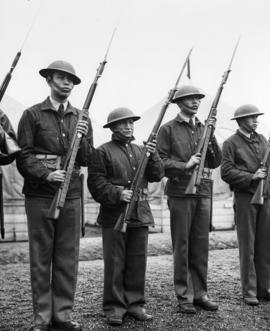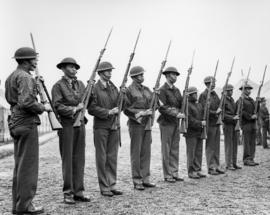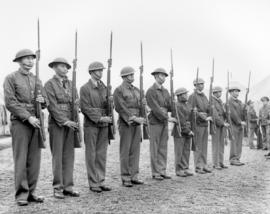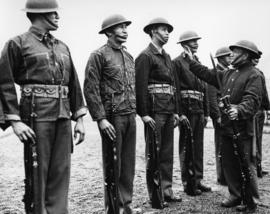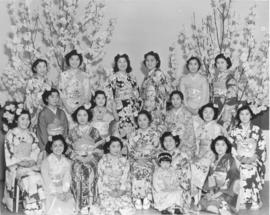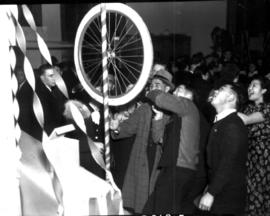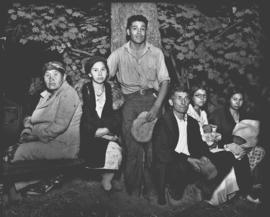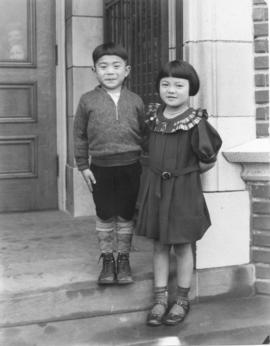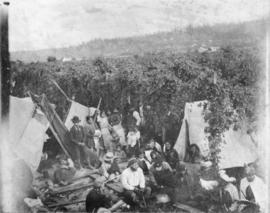- Item
- 1940-12-07
Part of Richards Studio Photographs
Members of Company B, 163rd Infantry pose at attention. Company B was composed almost entirely of Native Americans, mostly Sioux from the Fort Peck Indian Agency in Northeast Montana. They served in the Montana National Guard until they were inducted into national service in September of 1940. After the bombing of Pearl Harbor, they were some of the first to be sent overseas, where they fought the Japanese on New Guinea and in the Philippines. Native Americans served in the Armed Forces at a disproportionately high rate in World War II. More than 44,000 served, out of a total population of less than 350,000, most of them as volunteers. Native Americans have the highest record of military service per capita when compared to other ethnic groups. (T.Times 12/11/1940 p.1)
Indians of North America--Sioux tribe; Montana National Guard, 163rd Infantry, Company B--Camp Murray; Ethnic groups--Indians of North America;
